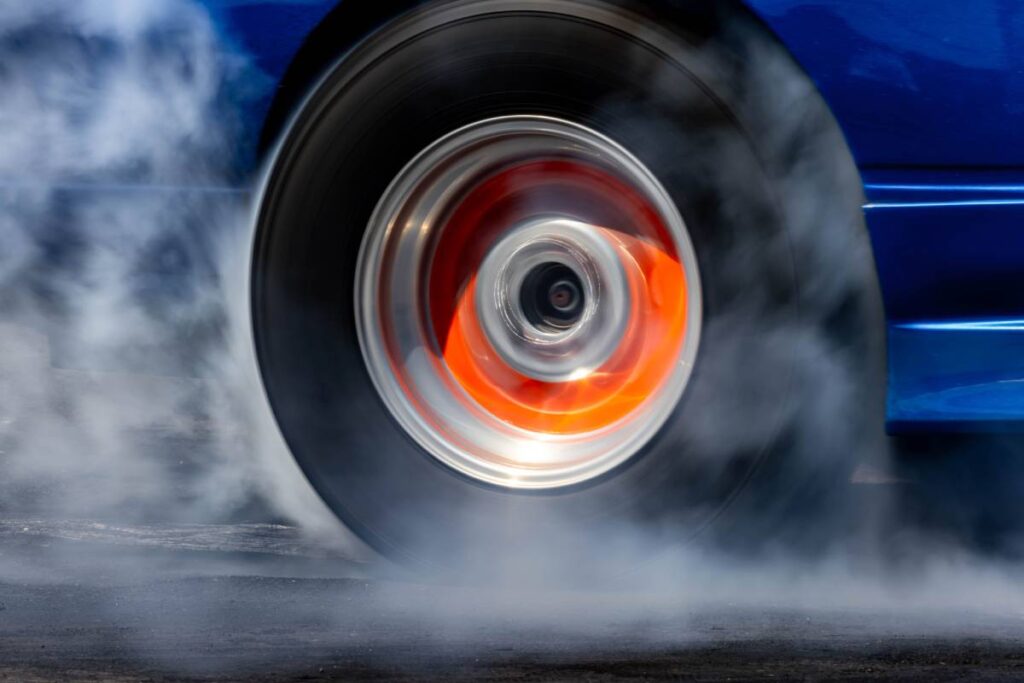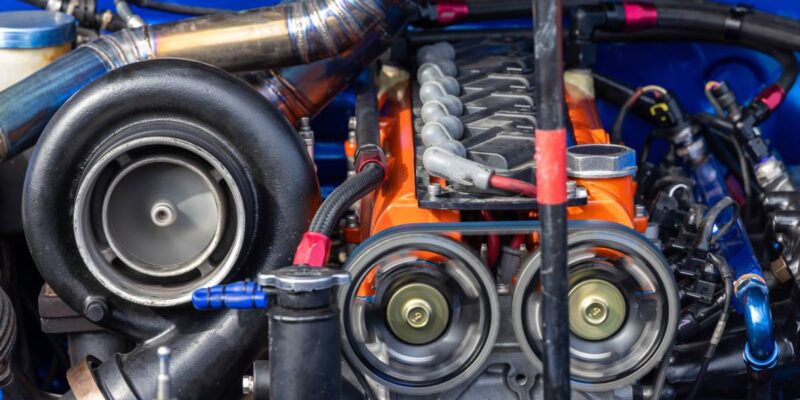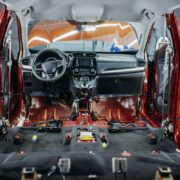In the car world, it’s all about how fast and strong your ride is. Getting the lowdown on horsepower, torque, and cylinders is like cracking the code to a super smooth engine.
All that car talk can sound like gibberish, but it’s actually about getting that rush when you hit the pedal, or towing stuff without breaking a sweat. So, let’s take a chill trip into the heart of what makes cars awesome and see how all these bits work together to make driving a blast.
What’s the difference between hp and torque?
Understanding the difference between horsepower (HP) and torque can seem like diving into the deep end of car jargon, but fear not! Let’s splash around and make things crystal clear.
Think of horsepower as the superstar sprinter at the Olympics, while torque is the muscle-bound weightlifter at the gym. Both play crucial roles in how a car performs, but they do different jobs.
Horsepower (HP) is all about speed and agility. It measures how quickly your car can do work over time. So, when you’re revving up on the highway, horsepower is what propels you forward, helping you zip past slower traffic or tackle steep inclines without breaking a sweat. More horsepower means your car can accelerate faster and reach higher speeds.
On the other hand, torque is the brute force that gets things moving from a standstill. It’s the grunt that helps you tow heavy loads or climb steep hills without breaking a sweat. Torque is like the heavy lifter in the car world, responsible for getting you unstuck from muddy terrain or pulling a trailer up a hill with ease.

Here’s the kicker: while horsepower and torque are different, they work together like a dynamic duo. Picture Batman and Robin, or peanut butter and jelly – they’re better together.
When you’re cruising down the road, horsepower is the one doing most of the heavy lifting, keeping you at a steady speed or accelerating when you put your foot down. But when you need to haul something heavy or conquer a tough terrain, torque steps in like a superhero, providing the raw power to get the job done.
Imagine you’re driving up a steep hill. Your car needs both horsepower and torque to conquer it. Horsepower keeps you moving forward, while torque digs in and gives you the oomph to climb that incline without losing speed.
Now, let’s put it in simpler terms:
- Horsepower: It’s all about speed and acceleration. More horsepower means your car can go faster and accelerate quicker. It’s your highway hero, helping you zip past slowpokes.
- Torque: This is your buddy when it comes to heavy lifting and tough tasks. More torque means your car can tackle steep hills, tow heavy trailers, or power through rough terrain without breaking a sweat.
So, when you hear car enthusiasts talking about horsepower and torque, just remember: horsepower is for speed demons, while torque is for the tough stuff. And together, they make your car the ultimate driving machine, whether you’re cruising down the highway or off-road adventuring.
Understanding the difference between HP (horsepower) and BHP (brake horsepower) might sound like navigating through alphabet soup, but fear not! Let’s break it down into bite-sized pieces to make it clearer.
Horsepower (HP)
Think of horsepower as the energetic sprinter at the track meet, ready to bolt at a moment’s notice. HP measures the rate at which work is done over time, particularly in the context of engines and vehicles. It’s all about speed and agility, determining how quickly your car can accelerate, maintain speed, or climb hills.
Brake Horsepower (BHP)
Brake horsepower, on the other hand, is like the MVP of the engine world, giving you the real power output of your engine without any sneaky losses. It’s the power measured directly at the engine’s crankshaft, before any energy is lost due to friction or other inefficiencies. In simpler terms, BHP tells you how much raw power your engine generates before it’s siphoned off by the transmission, drivetrain, or other components.

Now, let’s dive a bit deeper into these concepts:
Horsepower (HP): When you hear people talking about the horsepower of a car, they’re usually referring to the advertised or nominal horsepower. This is the power output of the engine as measured under ideal conditions in a laboratory setting. It’s the horsepower figure you see on spec sheets and in car advertisements, often used as a bragging right by car manufacturers.
However, the actual horsepower your car delivers to the wheels can be lower than the advertised figure due to various factors like friction, heat, and mechanical losses along the drivetrain. This is where BHP comes into play.
Brake Horsepower (BHP): BHP is the real deal – it’s the power your engine produces at the crankshaft, measured using a device called a dynamometer (dyno for short). Unlike HP, which can be affected by factors outside the engine, BHP gives you a true measure of your engine’s power output without any interference.
The term “brake” in brake horsepower comes from the olden days when engines were tested using a device called a “brake” to apply load and measure power. Nowadays, modern dynos do the job more efficiently, but the name stuck around.
So, in a nutshell:
- Horsepower (HP): Advertised or nominal power output of the engine, subject to losses along the drivetrain.
- Brake Horsepower (BHP): Actual power output of the engine measured at the crankshaft, giving you the true power without any losses.
HP is like a sneak peek at what your car can do, and BHP? That’s the pure muscle your engine’s got before real-life stuff gets in the way. They’re both cool ways to know what your ride’s got under the hood, whether you’re hitting the gas on the racetrack or just rolling down the road.
Does the number of cylinders affect horsepower and torque?
Absolutely, let’s break down the relationship between the number of cylinders and horsepower/torque in a way that’s easy to grasp.
Picture your car’s engine as a team of workers, with each cylinder being a member of that team. Now, the number of cylinders in your engine acts like the size of your workforce. The more cylinders you have, the more “workers” you have to generate power.

Here’s the lowdown:
- More Cylinders, More Power: Generally, vehicles with more cylinders tend to produce more power in terms of both horsepower and torque. This is because each cylinder contributes its own combustion power to the engine’s output. It’s like having more chefs in the kitchen to whip up a delicious meal – the more, the merrier!
- Horsepower Boost: When you have more cylinders, your engine can burn more fuel and air mixture with each revolution, resulting in a more powerful explosion. This translates to higher horsepower, giving you better acceleration and top speed. It’s like adding more horses to your stable – you can cover more ground in less time.
- Torque Talk: Similarly, more cylinders mean more torque, which is the twisting force that gets your wheels moving. With each cylinder contributing its torque output, you get a stronger push from the engine. It’s like having more hands on deck to push a heavy object – the more hands, the easier the task becomes.
However, it’s important to note that the relationship between cylinders, horsepower, and torque isn’t a simple one-to-one correlation. Other factors like engine design, size, and efficiency also play significant roles.
- Engine Design Matters: The way your engine is designed can affect how efficiently it converts fuel into power. A well-designed four-cylinder engine can outperform a poorly designed six-cylinder engine in terms of power output. It’s like comparing a finely tuned instrument to one that’s out of tune – the former will always sound better.
- Turbocharged and Supercharged Engines: These days, tech’s so advanced that it doesn’t really matter how many cylinders your car has. Thanks to turbo and superchargers, even engines with just a few cylinders can pack a serious punch. It’s like giving your engine a caffeine boost – suddenly, it’s all revved up and ready to rock.
- Hybrid and Electric Vehicles: They’re a whole different ballgame. Forget about cylinders – these babies give you that zip right when you want it. It’s like hitting the power button and zoom, you’re off! No waiting around, just instant go whenever you need it.
So here’s the thing: the number of cylinders in your car’s engine does its bit for power and oomph, but it’s not the whole story. The engine’s design, the tech behind it, and how smart it uses fuel are super important too. Whether your ride’s rocking a modest four-banger or a beastly twelve-cylinder monster, the real magic happens when all the parts play nice together to give you that rush when you hit the gas.









